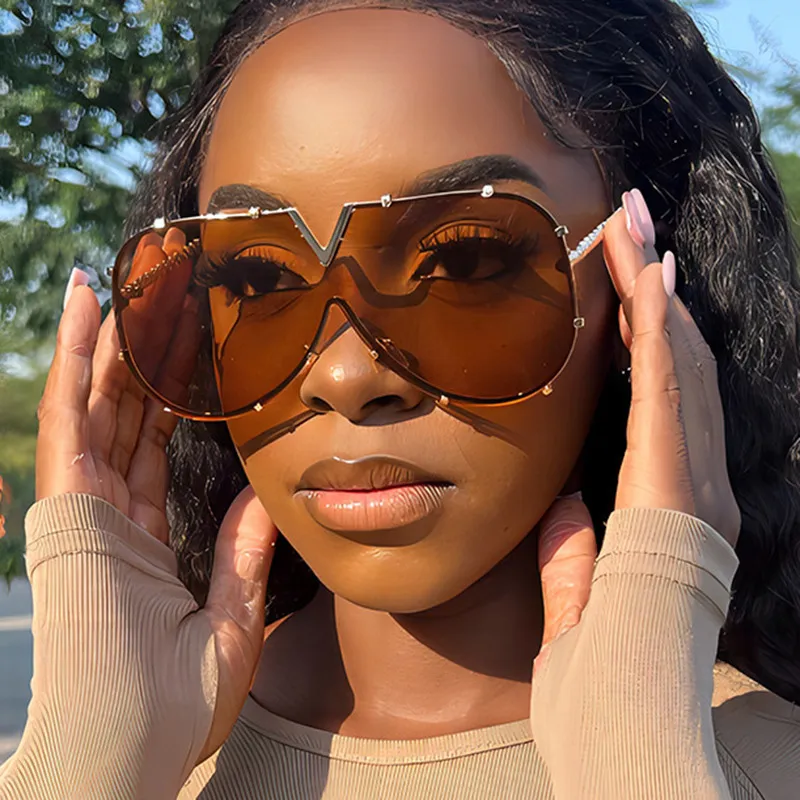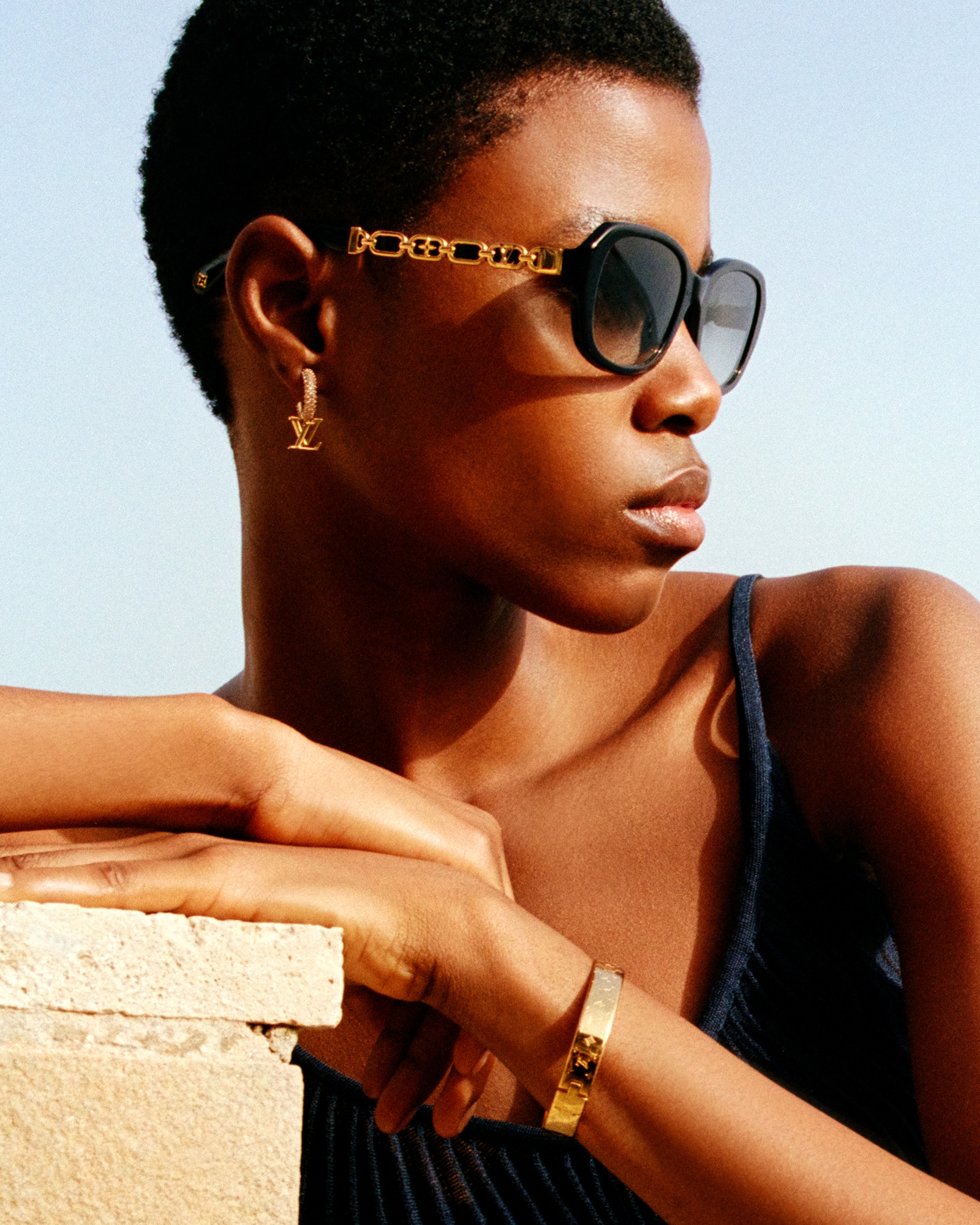Sunglasses For women with Photochromic Lenses: Do They Work in All Light Conditions?
What to Consider in Buying Sunglasses: An Extensive Purchasing Guide
Choosing the right sunglasses entails greater than simply choosing a trendy pair. Trick variables consist of UV security, lens types, and frame products. Designer Sunglasses For women. Comfort and fit are also critical for day-to-day wear. Recognizing lens colors and polarization can boost aesthetic clearness. Furthermore, brand name online reputation and service warranty choices play a significant duty in making certain a smart investment. Each facet needs careful factor to consider to shield one's eyes successfully. What should one prioritize first?
Understanding UV Protection and Lens Kind
When choosing sunglasses, understanding UV security and lens types is necessary for making certain eye safety and comfort. Ultraviolet (UV) rays from the sun can cause substantial damage to the eyes, bring about conditions such as cataracts and macular degeneration. Effective sunglasses should obstruct 100% of UVA and UVB rays, providing essential protection.Lens kinds likewise play a crucial duty in the functionality of sunglasses. Polarized lenses lower glare from reflective surface areas, making them ideal for tasks like driving or water sports. Gradient lenses, which are darker at the leading and lighter near the bottom, appropriate for general use and outside activities. In addition, photochromic lenses readjust their color based upon light problems, using adaptability. Ultimately, prioritizing UV defense together with the proper lens type enhances both safety and visual clearness, permitting individuals to enjoy outside tasks without jeopardizing eye health and wellness.
Frame Designs and Products
Picking the right frame style and product is simply as important as understanding UV security and lens kinds. Different framework designs can greatly influence both appearances and performance. Typical designs include aviators, wayfarers, and cat-eye, each satisfying unique preferences and face shapes.Materials utilized in sunglasses structures differ extensively, influencing resilience, weight, and convenience. Plastic structures, frequently lightweight and budget friendly, appropriate for sportswear. Steel frameworks, while typically more resilient, can be heavier but offer a classic appearance. In addition, there are environmentally friendly options made from sustainable products, interesting eco mindful consumers.The option of frame product can also affect the total fit and feeling of the sunglasses. For those that prioritize fashion or efficiency, recognizing the subtleties of framework styles and materials assures an educated purchase that aligns with individual style and lifestyle demands.
Convenience and Fit Considerations
When picking sunglasses, the shape of the frame plays an important role in attaining a comfortable fit. An appropriate nose bridge fit is vital, as it helps protect against sliding and pain during wear. Comprehending these elements can significantly improve the general experience with sunglasses.
Frame Forming Relevance
The form of sunglasses structures plays an important function in determining general convenience and fit. Numerous frame shapes, such as round, square, and aviator, deal with various face structures, influencing exactly how well the sunglasses rest on the face. A well-matched frame form can enhance stability and minimize pressure factors, making prolonged wear much more enjoyable. Rounded structures might soften angular attributes, while square structures can add meaning to softer facial contours. Furthermore, the structure's width ought to straighten with the user's face, making sure optimal assistance. Ultimately, selecting the right structure shape is vital for stabilizing design with comfort, as the wrong option can cause pain, slippage, or constant adjustments throughout the day.

Nose Bridge Fit
Typically ignored, the fit of the nose bridge is essential for ensuring comfort and stability in sunglasses. An appropriate nose bridge fit can stop gliding, squeezing, or discomfort throughout extended wear. Sunglasses usually feature various nose bridge widths-- narrow, medium, and wide-- to accommodate differing face frameworks. People with greater or reduced nose bridges may require specific styles to achieve excellent fit. Flexible nose pads can likewise improve personalization, enabling users to customize the fit for personal comfort. It is very important for buyers to try out sunglasses to evaluate exactly how they hinge on the nose without triggering inflammation. Inevitably, the right nose bridge fit adds substantially to the general effectiveness and satisfaction of using sunglasses.
Lens Color and Tints
Lens shade and tints play an important duty best site in improving visual convenience and security from damaging UV rays. Different tones can influence understanding and comparison, making it important to select appropriate choices based on certain activities and atmospheres. Understanding the impacts of various colors can assist consumers pick sunglasses that finest suit their demands.
Different Lens Color Styles
What variables should one think about when choosing lens shades for sunglasses? Various lens shades serve different objectives and can enhance visual comfort. Grey lenses lower brightness without distorting shades, making them perfect for general usage. Brown and amber lenses improve comparison, improving deepness understanding, which is helpful for exterior tasks. Yellow lenses are reliable in low-light problems, offering clearness and boosted exposure. Eco-friendly lenses reduce glare while maintaining shade balance, ideal for sporting activities and exterior enthusiasts. Furthermore, mirrored finishes can further reduce glow and improve style. Individual choice also plays a necessary duty, as people might choose colors based on aesthetic charm or certain tasks. Recognizing these variables help in selecting the most suitable lens color for one's needs.
Effects of Tints

Picking Suitable Shades
How can one figure out the best lens color and color for their particular demands? Various lens shades and colors serve various objectives, affecting visual convenience and quality. Gray lenses work for lowering general brightness while maintaining all-natural color equilibrium, making them optimal for everyday read here use. Brown and amber colors boost contrast and deepness perception, ideal for exterior activities like treking or angling. Yellow lenses raise presence in low-light problems, beneficial for overcast days. Polarized lenses, no matter of color, minimize glare from reflective surface areas, boosting safety and security and comfort. It is necessary to consider personal tasks and ecological problems when selecting lens shades, making certain peak efficiency and defense from hazardous UV rays. Tailoring selections to details needs improves the total experience with sunglasses.
Polarization and Glow Decrease
Why is polarization vital in sunglasses? Polarization plays a vital duty in improving aesthetic comfort and clarity. Sunglasses with polarized lenses are developed to remove straight light waves, which are primarily in charge of glow. This capacity substantially reduces representations from surface areas such as water, roadways, and snow, making them specifically valuable for tasks like driving, angling, or skiing.Glare can trigger eye stress and pain, impairing vision and potentially leading to accidents. Polarized lenses boost comparison and color understanding, enabling a clearer sight of the surroundings.When thinking about sunglasses, individuals ought to look for polarized options to boost their outside experience. While these lenses provide distinct benefits, it's crucial to confirm that the sunglasses additionally give ample UV defense. With each other, polarization and UV defense create a thorough service for maintaining eye health and overall visual convenience in intense problems.
Brand Name Online Reputation and Service Warranty Options
Many aspects contribute to the option of sunglasses, brand reputation and warranty choices greatly affect customer options. Brand names with a solid reputation usually suggest top quality and reliability, as they are typically established and relied on by customers gradually. Consumers regularly are advice attracted toward identified names that guarantee resilience, style, and protection from harmful UV rays.Additionally, guarantee alternatives play a vital duty in the acquiring decision. A complete service warranty can offer peace of mind, covering issues and offering repair work or replacements. This secure urges self-confidence in the item's longevity and performance. Consumers ought to examine the size and terms of the service warranty, in addition to the brand name's customer support credibility, to assure they are making an informed decision. Inevitably, the combination of brand track record and warranty options can notably affect the perceived value and fulfillment acquired from a set of sunglasses.
Regularly Asked Inquiries
Just how Do I Tidy and Preserve My Sunglasses Correctly?

Can I Wear Prescription Glasses With Sunglasses?
Putting on prescription glasses with sunglasses is possible with different choices, consisting of clip-ons or prescription sunglasses. This mix assurances clear vision and protection from UV rays, allowing people to enjoy outdoor tasks easily and smartly.
Are Expensive Sunglasses Well Worth the Financial Investment?
The value of pricey sunglasses often exists in exceptional materials, much better UV defense, and boosted toughness. For some individuals, this investment guarantees lasting eye health and design, making it worthwhile in spite of the higher first price.
What Is the Ideal Lens Width for My Face?
Establishing the suitable lens size involves determining facial functions. Generally, bigger lenses fit wider faces, while narrower lenses enhance slimmer profiles. Branded Sunglasses for Women. Personal comfort and style choices eventually lead the option for best fit and appearance
How Frequently Should I Change My Sunglasses?
The frequency of sunglasses replacement depends upon use and wear. Commonly, people should think about changing them each to 2 years, particularly if lenses are scraped, structures are harmed, or UV protection lessens over time.